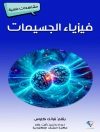Ob die Kernfusion in absehbarer Zukunft als Energiequelle nutzbar sein wird, hängt im Wesentlichen davon ab, wie schnell sich eine Reihe prinzipieller technologischer Probleme lösen lassen wird. Dazu zählt insbesondere die Frage des Plasma-Confinements. Zur Erarbeitung der theoretischen Grundlagen hervorragend geeignet ist dieser moderne, durch zahlreiche Übungsaufgaben ergänzte, in erster Linie für fortgeschrittene Studenten konzipierte Band über Plasmaphysik.
Tabella dei contenuti
Basic Physics
Motion of Charged Particles
Magnetic Confinement
Kinetic Theory
Fluid Theory
Plasma Equilibria
Waves
Instabilities
Neoclassical Transport
Plasma Rotation
Turbulent Transport
Heating and Current Drive
Plasma-Material Interactions
Divertors
Plasma Edge
Neutral Particle Transport
Power Balance
Operational Limits
Fusion Reactors and Neutron Sources
Circa l’autore
Professor Stacey received his Ph D in Nuclear Engineering from the Massachusetts Institute of Technology in 1966. He then worked in naval reactor design at Knolls Atomic Power Laboratory and led the fast reactor theory and computations and the fusion research programs at Argonne National Laboratory. In 1977, he became Callaway Professor of Nuclear Engineering at the Georgia Institute of Technology, where he has been teaching and performing research in reactor physics and plasma physics. He is the author of six books and about 250 research papers. He led the international INTOR Workshop which defined the design features and R&D needs for the first fusion experimental reactor, for which he received the US Dept. of Energy Distinguished Associate Award. Professor Stacey is a Fellow of the American Nuclear Society and of the American Physical Society and is the recipient of, among other awards, the Seaborg Award for Nuclear Research and the Wigner Reactor Physics Award from the American Nuclear Society.












